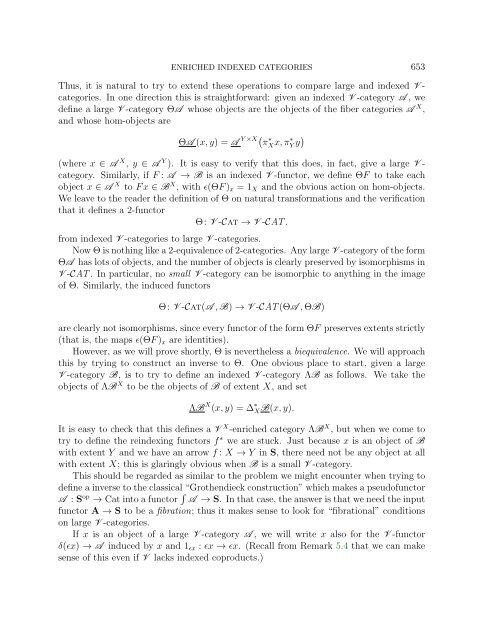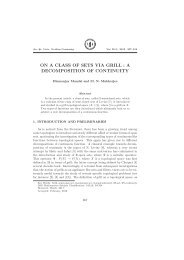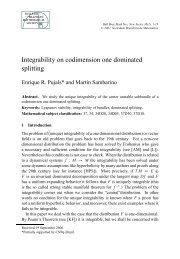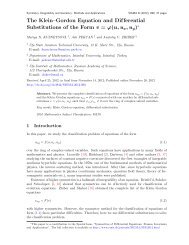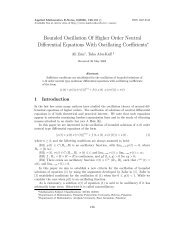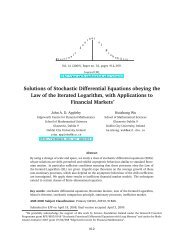ENRICHED INDEXED CATEGORIES Contents 1. Introduction
ENRICHED INDEXED CATEGORIES Contents 1. Introduction
ENRICHED INDEXED CATEGORIES Contents 1. Introduction
Create successful ePaper yourself
Turn your PDF publications into a flip-book with our unique Google optimized e-Paper software.
<strong>ENRICHED</strong> <strong>INDEXED</strong> <strong>CATEGORIES</strong> 653Thus, it is natural to try to extend these operations to compare large and indexed V -categories. In one direction this is straightforward: given an indexed V -category A , wedefine a large V -category ΘA whose objects are the objects of the fiber categories A X ,and whose hom-objects areΘA (x, y) = A Y ×X( π ∗ Xx, π ∗ Y y )(where x ∈ A X , y ∈ A Y ). It is easy to verify that this does, in fact, give a large V -category. Similarly, if F : A → B is an indexed V -functor, we define ΘF to take eachobject x ∈ A X to F x ∈ B X , with ɛ(ΘF ) x = 1 X and the obvious action on hom-objects.We leave to the reader the definition of Θ on natural transformations and the verificationthat it defines a 2-functorΘ: V -Cat → V -CAT .from indexed V -categories to large V -categories.Now Θ is nothing like a 2-equivalence of 2-categories. Any large V -category of the formΘA has lots of objects, and the number of objects is clearly preserved by isomorphisms inV -CAT . In particular, no small V -category can be isomorphic to anything in the imageof Θ. Similarly, the induced functorsΘ: V -Cat(A , B) → V -CAT (ΘA , ΘB)are clearly not isomorphisms, since every functor of the form ΘF preserves extents strictly(that is, the maps ɛ(ΘF ) x are identities).However, as we will prove shortly, Θ is nevertheless a biequivalence. We will approachthis by trying to construct an inverse to Θ. One obvious place to start, given a largeV -category B, is to try to define an indexed V -category ΛB as follows. We take theobjects of ΛB X to be the objects of B of extent X, and setΛB X (x, y) = ∆ ∗ XB(x, y).It is easy to check that this defines a V X -enriched category ΛB X , but when we come totry to define the reindexing functors f ∗ we are stuck. Just because x is an object of Bwith extent Y and we have an arrow f : X → Y in S, there need not be any object at allwith extent X; this is glaringly obvious when B is a small V -category.This should be regarded as similar to the problem we might encounter when trying todefine a inverse to the classical “Grothendieck construction” which makes a pseudofunctorA : S op → Cat into a functor ∫ A → S. In that case, the answer is that we need the inputfunctor A → S to be a fibration; thus it makes sense to look for “fibrational” conditionson large V -categories.If x is an object of a large V -category A , we will write x also for the V -functorδ(ɛx) → A induced by x and 1 ɛx : ɛx → ɛx. (Recall from Remark 5.4 that we can makesense of this even if V lacks indexed coproducts.)


